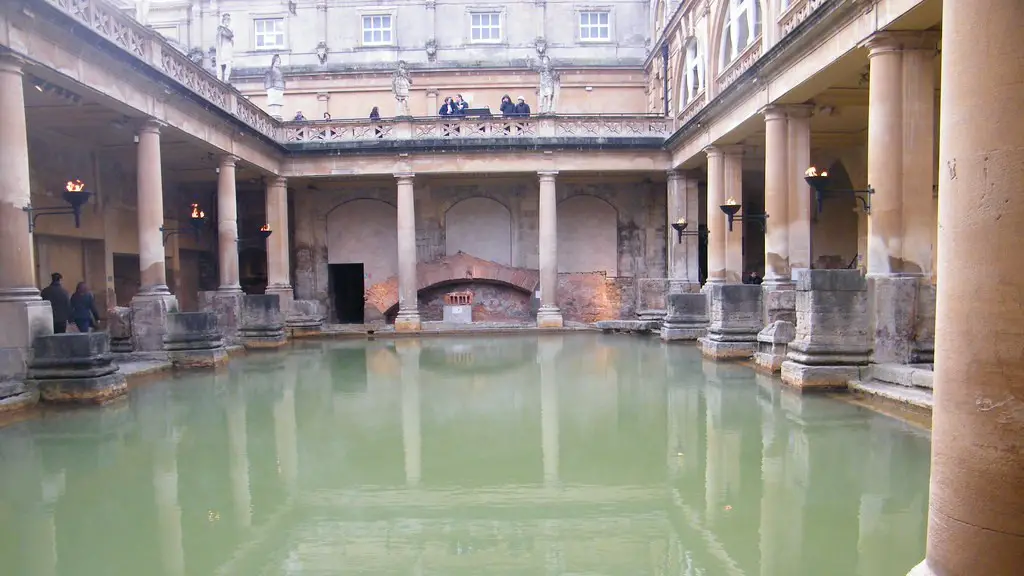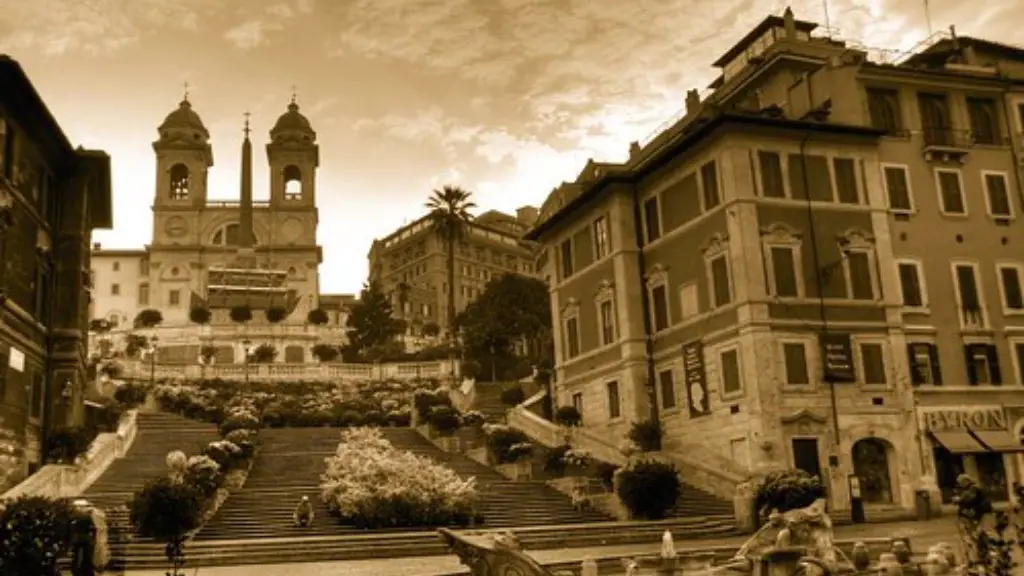The ancient Romans had a unique and eccentric culinary habit of eating dormice or Glis Glis. It is unclear exactly why this delicacy gained such popularity, but it is theorised to have been either because of its taste, or its putative medicinal properties. Although the idea of eating such an animal may seem curious to modern sensibilities, dormice were considered an esteemed dish among the upper classes of the Roman Empire.
Dormice, or gliridae, are a group of rodents that are found mostly in Africa, Eurasia and parts of North America. They live in trees and use their long tails for balance as they leap from one branch to another. Dormice were so cherished by Roman gourmands that laws were written to protect them from over harvesting. It is thought that the Romans caught dormice using traps, or possibly even by training birds to retrieve them.
Historians believe that there were two possible reasons for why ancient Romans relished dormice so much. Firstly, it is thought that dormice were considered to be tasty because of the high fat content and sweetness of the meat. Secondly, dormouse meat was believed to have medicinal values, offering an aphrodisiac, energising and possibly even therapeutic qualities.
While many assume that the Romans ate dormice whole and raw, historians suggest that they were actually not consumed in this manner, but instead poached and served with a variety of herbs, spices and sesame oil. This is particularly evidenced through the works of Apicius, one of Rome’s most famous gourmands.
Dormice have fascinated people throughout history and have been eaten even today – though they are now considered delicacies served in large, upscale restaurants rather than everyday Roman meals. For example, in 2001, chef Niall Keating from The Connaught Hotel in London served an extravagant skewered dormouse dish.
Archaeologists have uncovered evidence that suggests that the ancient Romans did, in fact, enjoy dormice as part of their diet. Dormouse bones have been found in Roman settlements, as have evidence of ancient traps used to capture the creatures. As already mentioned, Apicius’ cookbook includes recipes for cooking dormice and other ancient manuscripts mention the use of dormice oil.
Despite the disappearance of the Roman Empire and the fall of dormouse-eating from popular culture, these creatures continue to intrigue culinary historians, who continue to research the history of the dormouse and its importance to the ancient Romans. Ultimately, whether it was the taste, the perceived medical benefits or plain curiosity that drew the ancient Romans to this unusual dish, the dormouse remains a living representation of an even more wondrous age of culinary extravagance and culinary experimentation.
The Roman Dining Experience
Although dormice were considered an esteemed dish among the upper classes of the Roman Empire, the dining customs of Rome were far from uniform. From the epic feasts of the patrician class to the simpler meals of the plebians, the range of culinary expressions reflects the many levels of dining customs practised throughout the time of the Roman Empire
The luxury displayed in Roman dinners was reflected through their banquets, which would include a wide variety of meats, fish, fruits and vegetables. Banquets normally took place in the triclinium, which was a formal dining area of the house where couches were positioned. It was customary for guests to recline at the table and many classes of wine were served by slaves.
Although it is assumed that the patricians were thus able to enjoy the tastes of dormice at their Grande Feasts, it is likely that their dining indulgences were rarely shared by the peasants. Instead, the plebian classes likely ate more humble dishes such as porridge and coarse bread with dried fruits and vegetables.
Balancing work and family life was also difficult for the plebians as farm work dictated strict daily routines. The monotony of peasant life was alleviated by the occasional festival or day of leisure, during which families would gather for communal meals, a tradition that continued in some form into the Middle Age.
The Commercialization of Dormice
Although much of the consumption of dormice seems to have dried up by the Middle Ages, they would remain a common fare centuries later. As societies became more industrialized, so too did the production and sale of dormice, which were often kept and bred in captivity, housed in specially built cages. As a result, dormice were transformed from a luxury item, to a delicacy that was now affordable to the masses.
Dormouse farms were especially popular in 18th and 19th century Europe, where wild dormice were captured and then sold in carnivals, festivals and markets, alongside traditional food fare. Dormice were also introduced to the United States during the 18th century, where these animals were trapped for their fur and for their meat. Today, the trapping of these animals has become heavily regulated, with trapping especially prohibited in some states.
Furthermore, campers and hikers now need to be careful to look out for these creatures as they spend more time outdoors. While not all areas are affected, spots such as established campgrounds, marshes and ponds are particularly popular habitats for the domesticated varieties of dormice.
The popularity of dormice has been seen in other parts of the world as well, including Australia and other parts of Asia. Here, dormice are raised in the wild and consumed as food. While they are not as popular as they once were, they continue to be an important part of the culinary tradition of certain countries, particularly those with a long history of Roman influence.
Dormice in Ancient Lore and Legends
Although there are several theories as to why ancient Romans ate dormice, one cannot ignore the fact that these animals were surrounded by a range of myths and legends. One of the most popular mythological references to dormice appears in Greek myth, where Theseus and Hercules are said to have both slain a giant dormouse during their journeys.
In addition, Ancient Greek writers such as Aesop also featured the dormouse in some of their famous fables. Dormice were also a common figure in Roman art and literature. The Roman poet Virgil even mentioned the dormouse in his epic poem, the Aeneid. It is believed that these animals were revered in pre-Roman cultures, due to their size and appearance.
As well as being viewed as an exotic delicacy by the ancient Romans, it is believed that the dormouse has shaped traditional beliefs and superstitions across many cultures. In the Middle Ages, dormice were thought to guard the entrance to Hades and were used to symbolise the qualities of strength, courage and tenacity.
In addition to their role in mythology, dormice were also considered to be a symbol of fertility in many cultures and were even seen as portents of good luck and fortune. The dormouse was also used in many forms of divination, with the Romani people in particular, associating the consumption of these animals with foresight.
The Enduring Popularity Of Dormice
While the demand for dormice has decreased significantly in recent years, they continue to remain an interesting topic of conversation among gourmands and history buffs alike. As already mentioned, the consumption of these creatures has regained some level of recognition in modern times, with Michelin-starred restaurants regularly serving up dishes featuring this elusive creature.
Today, one also can hire a dormouse foruse in commercials, movies and in advertising campaigns. As a result, this once mysterious delicacy of the ancient Romans has seen a shift from luxury food to exotic creature. Their importance to the history of the culinary habits of society goes without saying.
The domestication of the dormouse has also allowed for the breeding of the creatures, which has brought about the production of more meat, fur and droppings. These days, most dormouse farms are found in the United Kingdom, with some traders also stocking them in either live or dead form.
As a result of its popularity, dormice have also been subject to a range of conservation measures, a result of both their declining numbers and their role in important ecological roles. These days, the dormouse is a protected species across much of Europe, with conservation efforts underway to ensure their survival.
The Nutrition Of Dormice
In addition to the cultural and historical significance that dormice have long held, the nutritional profile of these creatures is also quite impressive. Dormice is especially high in fat, protein, vitamins and minerals. Given its portability and high-energy value, it is no wonder that these animals were prized by the ancient Romans and other cultures around the world.
Given the high fat content of dormice, it is easy to see why it was viewed as a delicacy. Dormice packs over two times the amount of fat as per gram than beef or chicken, making it a more energy packed alternative to other sources of meat. In addition, dormice are also quite rich in vitamin B1 and vitamin B12, as well as in minerals such as phosphorus, magnesium and zinc.
Interestingly, dormice has also long been used throughout history as an aphrodisiac. Reportedly, the ancient Romans consumed dormice prior to certain activities, as it was believed to contain invigorating qualities, which would help prepare them physically and emotionally. Although there is no scientific evidence to suggest that dormice has any effect on libido or sexual performance, it nonetheless remains a popular dining choice today.
Ultimately, while the exact reasons behind why ancient Romans ate dormice remains a mystery, one thing is for certain – this curious creature continues to fascinate culinary adventurers and historians alike. While quaint laws are no longer enforced to protect them from over harvesting, the continued respect for this creature has seen its survival into modern times, something that surely ancient Romans would be proud of.





